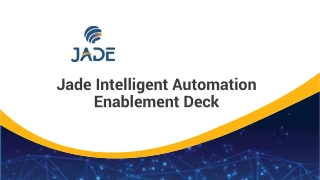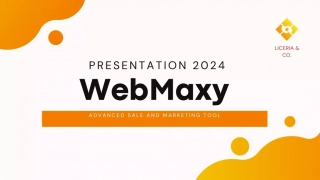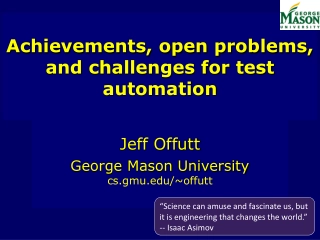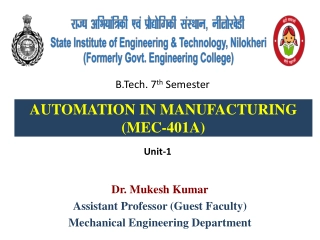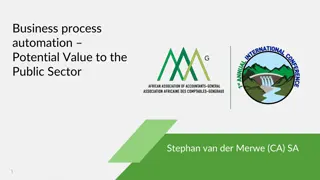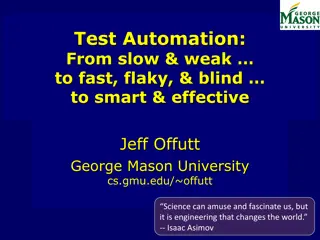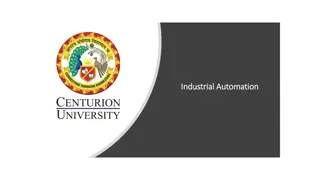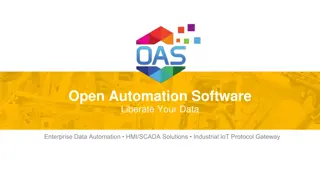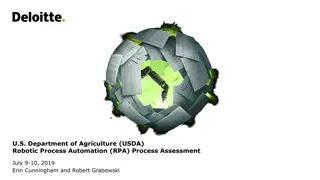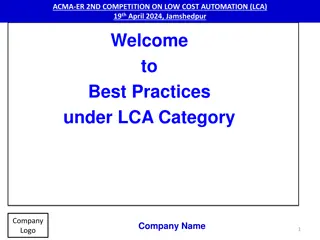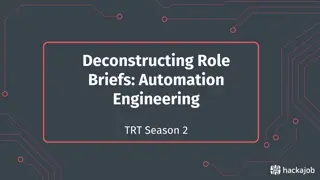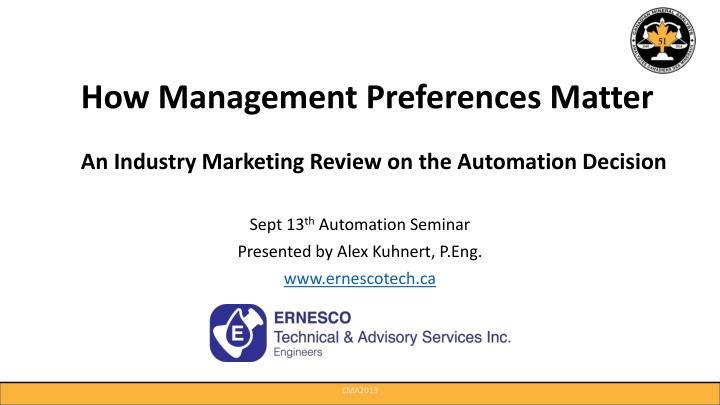
Management Preferences Impact on Automation Decision Making
Explore the influence of management preferences on the decision to automate in industry marketing scenarios. Factors such as resources, organizational capability, and leadership play a crucial role in determining the level of automation. Understand how aligning automation decisions with brand focus, fiscal goals, CSR positioning, and operational norms can affect outcomes.
Download Presentation

Please find below an Image/Link to download the presentation.
The content on the website is provided AS IS for your information and personal use only. It may not be sold, licensed, or shared on other websites without obtaining consent from the author. If you encounter any issues during the download, it is possible that the publisher has removed the file from their server.
You are allowed to download the files provided on this website for personal or commercial use, subject to the condition that they are used lawfully. All files are the property of their respective owners.
The content on the website is provided AS IS for your information and personal use only. It may not be sold, licensed, or shared on other websites without obtaining consent from the author.
E N D
Presentation Transcript
How Management Preferences Matter An Industry Marketing Review on the Automation Decision Sept 13thAutomation Seminar Presented by Alex Kuhnert, P.Eng. www.ernescotech.ca CMA2019
Do I Automate? And How Much? Do I Automate? And How Much? A Range of Factors Will Determine Automation Scope Complete automation Hybrid: Automated Zones fxn Hybrid: Linear Stages Hybrid: Modular Units No automation We want to assess the Critical Success Factors (CSFs) CMA2019
Critical Success Factors (CSFs) in Similar Business Scenarios Integrated Automation Solutions with PC Based Controls . Proceedings of the 10th Mediterranean Conference on Control and Automation. MED2002. Lisbon, Portugal, July 9-12, 2002. Reference: Dinesh Kumar, K., Roth, H., & Karunamoorthy. Critical Success Factors for the Implementation of Note that Management is listed specifically in two of these scenarios. Introducing automation to a lab can be like New Product Development CMA2019
Three Key Factors in a Labs Three Key Factors in a Lab s Automation Decision Automation Decision 1) Resources Money, time, people 2) Organizational Capability Skills, procedures, etc 3) Management Preferences Stated or unknown CMA2019
Management Preferences Is Actually the Main Management Preferences Is Actually the Main Determining Factor, but Often Considered Last Determining Factor, but Often Considered Last Corporate culture, experience, leader/follower status, etc. Fry-Skilling Strategy Model: 3 2 (Environment) 1 What Drives Consideration of Automation: - New projects or aging systems - Chronic quality problems - Expanded sampling volume - New testing parameters - Staff shortage or FIFO costs Procedures, Skills, Coordination Money, people, time CMA2019
How Management Preferences Impact the Decision to Automate Does automation align with our brand? Does automation align with our focus for the fiscal year? Does automation align with our CSR position? Does automation align with our operational norms and/or culture? Does automation align with my personal experiences and opinion? Level of Risk CMA2019
Brand Brand: Innovation If ore is being hauled by a herd of elephants, and we automate the control of those elephants, then we re still using elephants. That s not what I want from automation. - Executive at international gold miner Context: this miner s brand was Technology Leader Interested only in automation that included a new or different process, regimen or technology. Simply replacing people was not good enough. CMA2019
Focus for Fiscal Year Focus for Fiscal Year: Production If it doesn t pull more ounces out of the ground, I m not interested - Executive at international gold miner Context: gold at an all-time high Unspoken preference: it should directly pull ounces out of the ground CMA2019
CSR: CSR: Safety We re not a mining company with a safety problem. We re a safety company with a mining problem . - Executive at international iron mine Context: iron prices were high; Australian work culture focused on safety across the board; high FIFO costs CMA2019
CSR CSR: Jobs for the Community I don t want automation. I want you to manualize my entire mine . - Executive at third-world mining project Context: mine being constructed; corporate tax savings based on overall number of FTEs; a one-mine company. CMA2019
Operational Culture Operational Culture: We Get Automation Automation is our tool to do what we do better. We know it, we use it. Simple as that. - Executive at Canadian miner Context: history of automation applications across several disciplines: IT networks, software, exploration, transport, mill operation . A history is key not only in automation decision but in keeping a high level of success in implementing and using automation CMA2019
Operational Culture Operational Culture: Low Capex Company 1: Bought and installed used SAG mills, saving multiple millions on initial capital outlay. Corporate success story that trickled down to all management including the lab. Several discussions, proposals. Outcome: deferred indefinitely. Company 2: Lab Manager wanted automation, but the internal process for validating the spend on such a project was apparently too rigorous, and budgets were kept in line with historical spends to manage against commodity pricing uncertainty. Outcome: bought a used dryer on Craigslist (yes this is true). Context: both are base metal miners, in a market with a history of unstable and widely-ranging commodity prices Alarm bells regarding used automation; alarm bells on inefficient sales process CMA2019
Level of Risk Level of Risk: Possibly the #1 Consideration I love everything about automation, except when it breaks down . - VP Sequencing, New York Genome Center (2016) Reference: https://www.labmanager.com/ask-the-expert/2016/12/drs-swerdlow-and-simpson-on- trends-in-lab-automation#.XXeH6HdFxuk We are first adopters but we are not navigators - Lab Exec during a recent CMA event Supplier and Buyer Need to De-Risk the Process and the Project CMA2019
Strategies for De-Risking Lab Automation 1. Use what has worked before In very similar applications (same market, same matrix, same scope) In similar process models from other lab markets (clinical, pharma) 2. Redundancy in equipment and/or backup in process Standby units (requires additional capex, footprint, operational readiness) Manual processes (requires skills, procedural complexity, parts/maintenance management) 3. Produce cost/benefit and ROI models that cover all variances Adjust payback scenarios on the basis of variance of inputs (quantity, mass, matrix chemistry, etc) and variance in equipment uptime (85%, 90%, 95%, etc) 4. Develop the accountable service model: who, when, how, and costs CMA2019
Financial Models on Sample Input Scenarios Sample Throughput Implications Highly variable (unpredictable) about B.E.P. Strategy to develop better input controls Ranges predictably above and below B.E.P. Strategy to increase minimum daily loading. Strategy to tighten range. Always exceeds B.E.P., but variances produce Payback Period that only sometimes meets requirement. Strategy to increase lowest daily loading sources. Modification of automation scope. Breakeven Point Dependent on Sample Throughput CMA2019
What Is the Takeaway Message? Understand the Management Preferences that impact the decision- making in your (or your customer s) company Do this homework upfront to reduce time and cash investments in the sales and project design/specifications stage GO or NO-GO Decision Prepare as much justification as possible, and be conservative De-risk the project scope and design Every Case Is Different; Plan Well CMA2019


